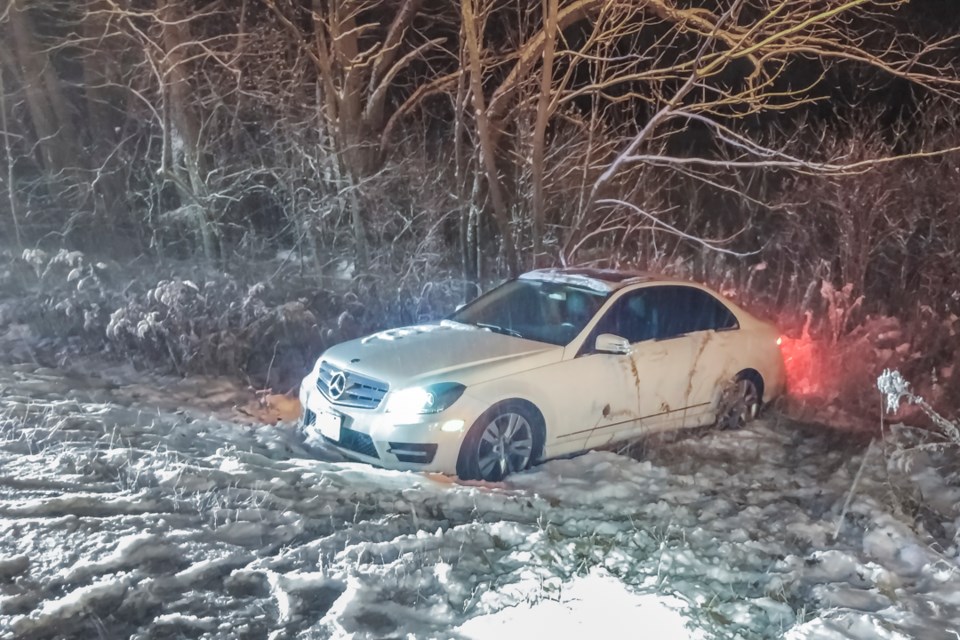If you can see your breath, it’s time to switch your tires.
Each year, almost 30 per cent of car accidents happen on snowy or icy roads and five percent of those accidents happen during snowfall. Don’t wait until you hit that first patch of black ice to install your winter tires.
“As soon as the temperature dips below 7°C, you should consider changing to winter tires in order to benefit from the increased traction, braking and handling they provide,” says Jason Maurino, a certified tire tech at Leo & John’s in Bradford.
All season tires are designed to get the most use out of a set of tires before you need to replace them. To achieve the high mileage rating for most all-season tires, manufacturers use a harder rubber compound to reduce wear.
Tires that are advertised as “fuel-efficient” help your car reduce the amount of fuel needed by reducing the rolling resistance or friction of the tire, thus making sure the engine doesn’t need to work as hard to move the car.
“These harder rubber compounds have less give and as the roads start getting colder, they just don’t stick the same,” said Maurino. “Winter tires offer up to 50 per cent or more winter traction than all-seasons.”
Once the weather becomes cold enough for snow to stay on the ground, any combination of snow, ice and slush can become a lubricant between your car and the road, reducing traction and control during acceleration, braking and while you steer your vehicle.
According to the Ministry of Transportation, having four winter tires properly installed on your vehicle not only affords better control while cornering and steering around curves in the road but can also shorten your stopping distance by 25 per cent vs. all-season tires.
Being able to control your vehicle during winter driving brings more than just peace of mind. Since 2016, the Ontario Government has mandated that insurance companies offer a discount for having winter tires on your car.
The discount may vary from company to company, but on average, you’ll save 5 per cent from your premium for installing winter tires.
To get the most out of your winter tires and to make them last as long as possible, keep an eye on your air pressure.
“Proper air pressure extends tread life, improves safety, and reduces fuel consumption,” says Maurino.
“Tire pressure decreases as temperatures drop, so be sure to check the pressures at least once a month when the tires are cold, preferably after the car has been out all night.”
To stay safe on the roads this winter, be sure to drive according to conditions. Slow down and leave a little more space than you normally would when driving, especially when merging into a lane in front of a large truck.
According to the MTO, it takes a tractor-trailer up to 10 times longer to stop on ice than on dry roads.
To check road conditions before heading out on your trip, take a look at the “Forecasted Road Conditions” section of the Ontario 511 website or take a look at the various Ontario 511 social media feeds for updates.
Just a few winter driving tips to help you get to your destination safely:
Carry an ice scraper and washer fluid effective to -40 deg. Celsius. If you’re not sure how to add washer fluid to your car, read the owner’s manual or ask someone to show you.
Clear ALL the snow from your vehicle (driving behind a white-out is never fun). Also, give yourself time to defrost your windows. Make sure you can see through all the windows and are able to use your mirrors and check your blind spots.
Look for reflections on the road. What looks like water may actually be ice.
Steer gently on curves and in slippery conditions. Hard braking, quick acceleration and abrupt gear changes can cause you to skid.
Avoid using cruise control on wet, snowy or icy pavement. It reduces your reaction time and vehicle control.
If you do skid, release your brakes and steer in the direction you want to go. Be careful not to oversteer.



